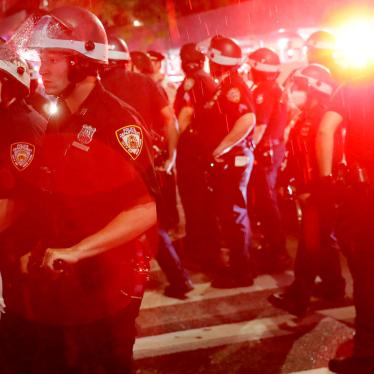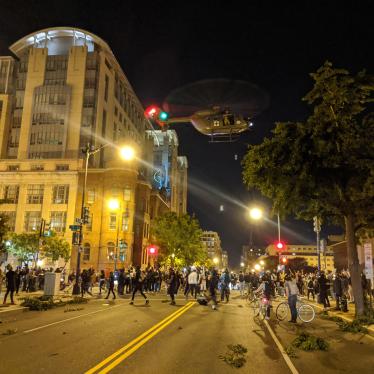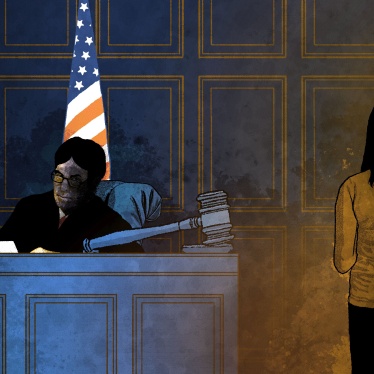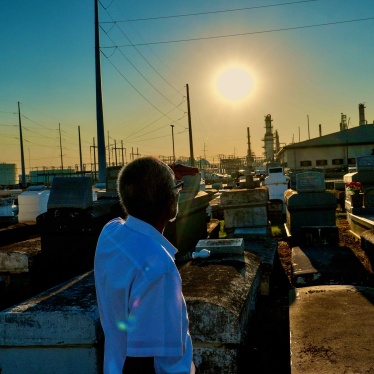The two red stripes formed an unmistakable and universally recognizable sign on Omid’s white helmet: a red cross. Yet a New York City police officer attempting to disperse largely peaceful protesters pinned him down with a knee on his back, threatening to drown him in the milk he was carrying to help protesters alleviate the effects of tear gas.
Omid is a street medic. Police arrested him on May 30 in Brooklyn and detained him in a crowded cell with 14 demonstrators for around 2 hours. Omid is not alone: across the United States, police have targeted street medics with the same brutality used against those protesting the institution’s systemic racism.
On June 2 in Asheville, North Carolina, local police in anti-riot gear barged into a line of street medics trying to protect a triage station they had set up in an alley away from the main protest. “We were standing at the opening of the alley, our hands over our heads, chanting that we were medics,” one of the volunteers told me. “Instead of talking to us, [the police] grabbed us by the shoulders, shoved us down the street, and told us to leave if we don’t want to be arrested.” The police then proceeded to destroy US$700 of medical supplies at the station, the volunteer said.
On May 31, in Austin, Texas, police fired a less-lethal impact projectile at a group of protesters, hitting Justin Howell, a 20-year-old Texas State University student, in the head. “He dropped dead weight to the ground and there was a lot of blood. We thought he was dead,” a witness told me. Police later claimed their intended target was someone standing near Howell who had thrown a plastic bottle and a backpack at the police.
After Howell lay on the ground with a fractured skull, the police chief announced, a police officer directed protesters to bring the wounded young man over to the nearby police headquarters so that he could receive medical attention. A video filmed at the time shows that a group of protesters, including street medics, then carried Howell to the station. As they approached, however, police officers guarding the headquarters fired so-called less lethal weapons at least 14 times, hitting one of the street medics with a projectile, injuring his hand. Precious minutes were lost for Howell, who now lies in hospital with brain damage. His recovery, doctors told the family, will be “a marathon, not a sprint.”
Street medics is a loose term referring to medical professionals and lay-people with first aid training, who not only help protesters cope with the incapacitating effects of tear gas and pepper spray, but also with the broken limbs and other injuries that can occur during stampedes, or the life-threatening wounds that can follow the impact of “less lethal” rounds, such as rubber bullets, pellets, bean bags, and tear gas cannisters.
Less lethal does not mean non-lethal. Human Rights Watch has documented countless cases over the years where these projectiles, fired at close range or at the wrong angle, lodged themselves in victims’ bodies, often in the head or chest, causing the loss of eyes, perforated chests, brain damage, cardiogenic shock, and even death. Law enforcement officials should as far as possible apply non-violent means before resorting to the use of force. Less lethal weapons should only be employed if other means remain ineffective and when strictly necessary to obtain a lawful and legitimate law enforcement objective. They should be preceded by clear warnings.
The often-unjustified use of these less lethal weapons by law enforcement in the US and around the world makes the presence of street medics crucial to preserving life and rendering protests safer for everyone involved. Take Aubreana Inda, for example, a 26-year-old whom police shot in the chest with a flash grenade during protests in Seattle on June 8. She indicated in a court declaration that doctors told her she had gone into cardiac arrest three times as a result of the impact, and would not have survived were it not for the street medics who revived her and brought her to a hospital. “I have since learned that police were talking about me over police radio band and were heard refusing to provide aid or respond to any calls for aid from protesters,” she said.
Given the size of crowds at recent US demonstrations following the killing of George Floyd and the frequent use of violence by police, the deployment of ambulances at the scene can often be delayed, which makes the role of street medics even more important. Police attacks on street medics only further compound the harm when they use excessive force, putting lives at even greater danger. Instead, police should protect the thousands of protesters out on the streets exercising their fundamental rights to freedom of expression and assembly, as well as the street medics caring for them.
Police Targeting ‘Street Medics’ at US Protests
Your tax deductible gift can help stop human rights violations and save lives around the world.
Region / Country
Most Viewed
-
April 17, 2024
West Bank: Israel Responsible for Rising Settler Violence

-
November 25, 2019
A Dirty Investment

-
April 27, 2021
A Threshold Crossed

-
June 24, 2022
Q&A: Access to Abortion is a Human Right

-
June 21, 2017
“Just Let Us Be”
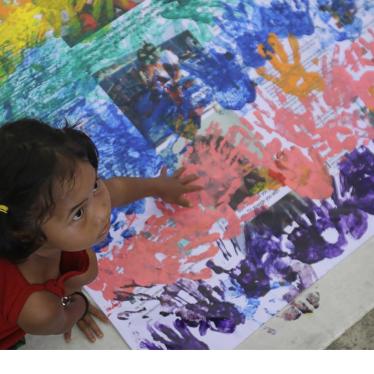

![Medics and volunteers march with thousands of people gathered around Lafayette Square, in Washington, DC, to protest the death of George Floyd. [June?] 6, 2020.](/sites/default/files/styles/embed_xxl/public/media_2020/06/202006us_protests_medics.jpg?itok=0zKID1qF)
